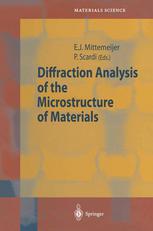

Most ebook files are in PDF format, so you can easily read them using various software such as Foxit Reader or directly on the Google Chrome browser.
Some ebook files are released by publishers in other formats such as .awz, .mobi, .epub, .fb2, etc. You may need to install specific software to read these formats on mobile/PC, such as Calibre.
Please read the tutorial at this link: https://ebookbell.com/faq
We offer FREE conversion to the popular formats you request; however, this may take some time. Therefore, right after payment, please email us, and we will try to provide the service as quickly as possible.
For some exceptional file formats or broken links (if any), please refrain from opening any disputes. Instead, email us first, and we will try to assist within a maximum of 6 hours.
EbookBell Team

0.0
0 reviewsDiffraction Analysis of the Microstructure of Materials provides an overview of diffraction methods applied to the analysis of the microstructure of materials. Since crystallite size and the presence of lattice defects have a decisive influence on the properties of many engineering materials, information about this microstructure is of vital importance in developing and assessing materials for practical applications. The most powerful and usually non-destructive evaluation techniques available are X-ray and neutron diffraction. The book details, among other things, diffraction-line broadening methods for determining crystallite size and atomic-scale strain due, e.g. to dislocations, and methods for the analysis of residual (macroscale) stress. The book assumes only a basic knowledge of solid-state physics and supplies readers sufficient information to apply the methods themselves.